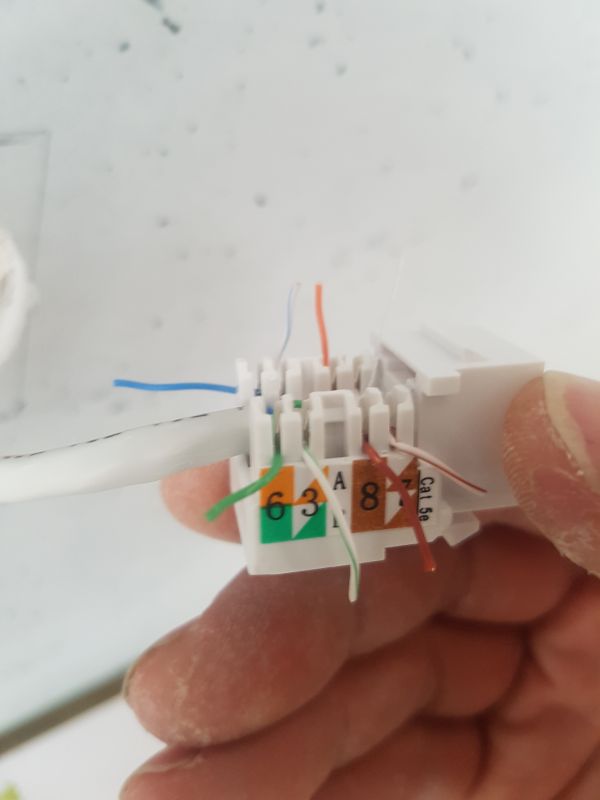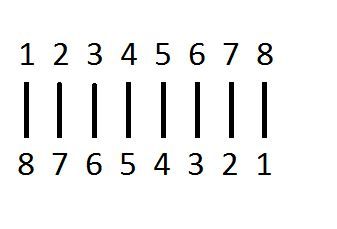Hello,
I sewed the socket in the wall with a twisted pair in accordance with the B standard.
I earned a plug in the switchboard according to the B standard, i.e. white-orange, orange, white-green, blue, etc.
On the cable tester mi shows wires 1-8, 2-7, 3-6, 4-5, 5-4, 6-3, 7-2, 8-1 etc
If I put a ready cable into the tester, it shows 1-1, 2-2, 3-3, 4-4, 5-5, 6-6, 7-7, 8-8.
Will my connection work?
Ps. I thought that I gave the plug the other way around when I earned money, but when I changed it, the tester showed the circuses ...
Please hints.




I sewed the socket in the wall with a twisted pair in accordance with the B standard.
I earned a plug in the switchboard according to the B standard, i.e. white-orange, orange, white-green, blue, etc.
On the cable tester mi shows wires 1-8, 2-7, 3-6, 4-5, 5-4, 6-3, 7-2, 8-1 etc
If I put a ready cable into the tester, it shows 1-1, 2-2, 3-3, 4-4, 5-5, 6-6, 7-7, 8-8.
Will my connection work?
Ps. I thought that I gave the plug the other way around when I earned money, but when I changed it, the tester showed the circuses ...
Please hints.






